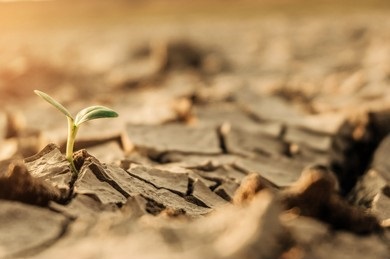Climate change and human activities have changed the structure and function of global ecosystems and will continue to affect global ecosystem service provisioning. Soil conservation services are an important regulating service provided by ecosystems, referring to the erosion regulation capacity of ecosystems to prevent soil loss and the ability to retain sediment storage.

The sensitivity of soil erosion to global environmental change and its relevance to the socio-economic environment has made the development of adaptive management strategies to improve ecosystem soil conservation services and reduce soil erosion hazards a major concern of researchers.
Lifeasible's assessment of soil conservation services focuses on the supply of soil conservation services to natural systems (if you require a human benefits assessment for human systems, you can contact our staff to determine your assessment options). That is, the assessment is based primarily on a soil erosion perspective, which is a physical assessment of the ecosystem's impact on the erosion and sand production process.
Therefore, we commonly use InVEST (integrated valuation of ecosystem services and trade-offs) model, RUSLE (revised universal soil loss equation) model, NPP (net primary productivity) indicator model, Sediment Budget model, etc. for soil conservation services assessment and soil erosion assessment in the measurement of soil conservation services assessment.
| Indicator type | Indicator name | |
| Soil erosion process indicators | Sand production by erosion | Soil erosion |
| Soil erosion change | ||
| Transport deposition | Soil retention | |
| Sediment export | Sediment yield | |
| Sediment yield change | ||
| Ecosystem pattern indicators | Land cover, land use | Different vegetation cover and land use have different abilities to control erosion or intercept sediment |
| Indicator name | Equation | Advantages | Applicable scale |
| Soil erosion | RUSLE model | Simple parameters, easy to compare and analyze different scenarios | Slope model, currently used from watershed to global scale |
| Soil erosion change | RUSLE model | Simple parameters, multiple sets of results can be output | Slope model, currently used from watershed to global scale |
| Soil retention | NPP indicator model | Simple parameters, easy to apply in data-poor areas | Stream city and larger scales |
| InVEST model | Simple operation, easy to operate, considering slope interception | Small and medium watershed scales | |
| Sediment Budget model | Consider sediment transport and deposition in the horizontal direction | Watershed and above | |
| Sediment yield | Sediment delivery ratio | The small amount of data, easy to operate | Large scale (> 10,000 km2 ) |
| Sediment yield change | InVEST model | Easy to run, detailed results | Small and medium watershed scales |
| Land cover, land use | Qualitative evaluation of soil conservation capacity of different land-use types with different vegetation cover | Low data requirements | Watershed and larger scale |
| Others | CTI (composite terrain index) | More reliable results | Only for slope scale |
| ERI (erosion regulation index) | Erosion hazard areas can be identified | Watershed and larger scale |
Soil conservation service is a kind of "directional flow service", the erosion change in the upstream area will not only affect the local area but also affect other areas such as middle and lower reaches along with the water system or sediment transport path.
Therefore, Lifeasible's effective assessment of soil conservation services includes the full path of soil erosion, transport, and deposition as well as different spatial scales such as slope flow domain and regional global. The corresponding assessment indicators and methods can reflect the dominant processes and influencing factors at different scales, helping clients to obtain comprehensive and in-depth data information and profiles of soil conservation service changes. Please contact our staff for the latest proposal.
Lifeasible has established a one-stop service platform for plants. In addition to obtaining customized solutions for plant genetic engineering, customers can also conduct follow-up analysis and research on plants through our analysis platform. The analytical services we provide include but are not limited to the following:
Get Latest Lifeasible News and Updates Directly to Your Inbox
Mechanism of Action of Plant Resistosome NRC4
May 20, 2025
Mechanisms Regulating Plant Chloroplast Biogenesis
April 15, 2025